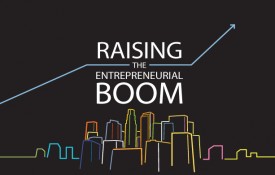COVID-19 has been a crisis within a crisis for our neighbors who are experiencing homelessness. Homelessness is, in large part, a health crisis. COVID-19 is another comorbidity that requires immediate triage while the development of long-term housing solutions continues.
In 2019, prior to the pandemic, according to the point-in-time count conducted by the Los Angeles Homeless Services Authority, more than 66,000 people in Los Angeles County were experiencing homelessness—a 12.7% rise from the previous year’s count. Investments supported by Proposition HHH and Measure H by Los Angeles taxpayers in 2016 and 2017 are making a difference—on average, 207 people exit homelessness every day.
But sadly, an additional 227 become homeless. We are going in the wrong direction.
We now are seeing the impact of COVID-19 on the homeless community. Although a point-in-time count will not be conducted this year due to social distancing and public health concerns, anecdotal evidence and observation suggest that the number of homeless individuals is increasing dramatically. Both Los Angeles and Orange County reported record numbers of deaths of people experiencing homelessness in 2020. While the virus may not be the direct cause of this increase, these deaths are no doubt an indicator of the increasing number of homeless individuals on our streets.
Beginning in spring 2020, counties and cities launched outreach programs and teams to perform wellness checks, and some distributed smartphones so individuals could have access to telemedicine. Free testing for COVID-19 was brought directly to areas such as the Skid Row neighborhood in Downtown Los Angeles. Trailers were sent throughout the State of California to provide places for people to isolate.
Industries such as retail trade, food services, and hospitality account for 51% of the COVID-related mass layoffs in California.
The most talked about response has been Project Roomkey, a statewide prevention strategy to ensure the safety of the most vulnerable unhoused residents—seniors over 65 or those who have underlying conditions that compromise their immunity. In Los Angeles County, it is reported that so far more than 6,000 people stayed safe while utilizing more than 4,000 otherwise empty rooms in 37 hotels as a result of this program.
Los Angeles service providers running the sites turned to Chrysalis clients to staff many of the Project Roomkey hotels. Hiring partnerships with an employment social enterprise such as Chrysalis is an example of how we can keep our community healthy and economically stable. The more someone has access to employment opportunities with a living wage or above, the better we will be able to recover from this COVID economy and lessen homelessness. If we look back at what has been happening and reported in the past few years, we can forecast that a focus on employment is going to be very important to helping people get through the COVID recession.
Among unsheltered adults experiencing homelessness for the first time, 59% cite economic hardship as the cause. Job loss or insecurity because of the COVID-19 pandemic will lead to evictions or other housing loss, further accelerating the increase in homelessness. Strategies to prevent homelessness are central now and will continue to be so over the next four or more years as we recover from the devastation of COVID on our communities.
Industries such as retail trade, food services, and hospitality account for 51% of the COVID-related mass layoffs in California. These sectors are also the largest employers of low-wage workers. The Economic Roundtable recently reviewed data from the 2008 Great Recession and projected that this pandemic recession could increase chronic homelessness by 68% in the State of California and 86% in Los Angeles County by 2023. Although job loss and increases in homelessness do not grow simultaneously, there is a direct correlation between loss of income and loss of shelter. Chrysalis saw this pattern with our clients after the Great Recession, when the growth in the number of clients seeking services increased not only in 2009 but also in the years to follow as individuals went from being unemployed to eventually losing their housing.
A common misperception is that someone is homeless because they do not want to work. Our experience—and research data—demonstrate that this is simply not true. It is estimated that 46% of non-chronically homeless individuals in the United States are working or worked within the past year. It is also incorrect to assume that receiving benefits incentivizes people not to work. When the national discussion about extending a $600 federal unemployment benefit occurred, we surveyed Chrysalis clients and found that most would rather return to work rather than remain on public support.
Since March 2020, roughly 2,000 people have become Chrysalis clients and more than 1,000 secured employment. In addition, throughout the entire year more than 1,500 people worked transitional jobs with our employment social enterprise.
Our staff worked diligently to meet Chrysalis clients where they were, whether that meant the individual was ready to secure a job or they needed to focus on their safety and health. In Los Angeles County, more than 50% of essential workers are Latinx—this group, along with the Black community, has faced some of the highest burdens of safer-at-home orders. These groups also disproportionately experience homelessness. In fact, Black people represent 8% of the population of Los Angeles County and 34% of people experiencing homelessness in the region.
COVID-19 has impacted people experiencing homelessness in the same way that it has our housed neighbors. An upside was the funding and political will to create programs such as Project Roomkey. We must see these programs through to their next phases and we must be prepared to prevent people from losing their homes because of economic hardships. The economic recovery from this pandemic will not be simple, but what we have learned from the model of Project Roomkey is that if we invest in employment social enterprise, we can get folks back to work, rebuild the infrastructure of our communities, and prevent a further escalation of the homelessness crisis we faced pre-pandemic. Let’s envision a community in which everyone has the opportunity to work and thrive.














































